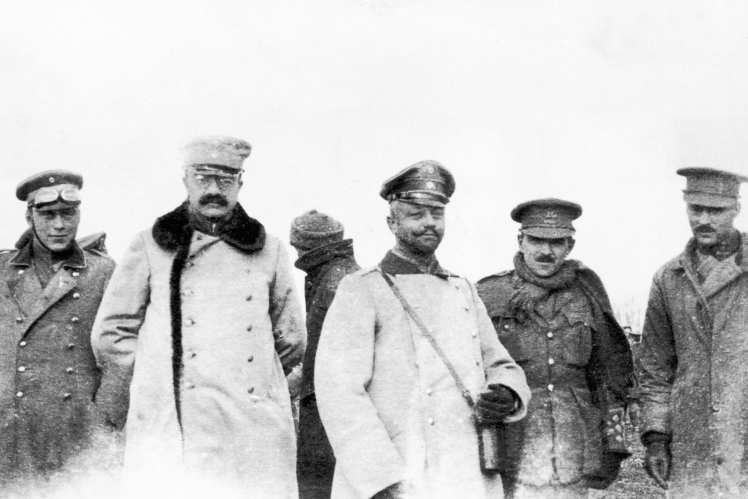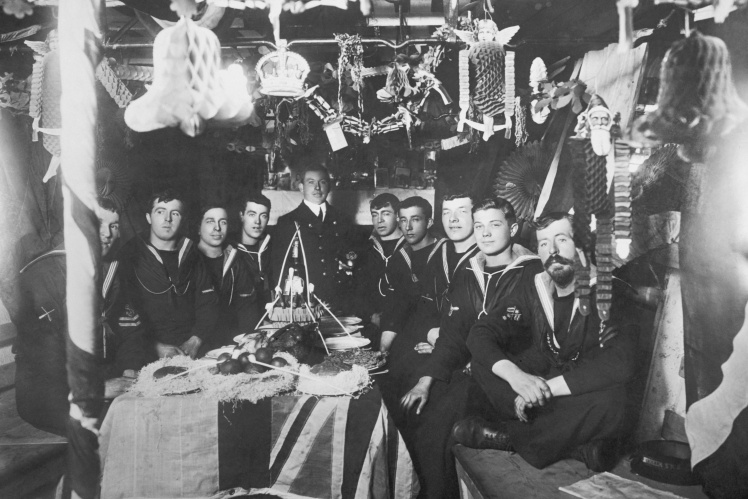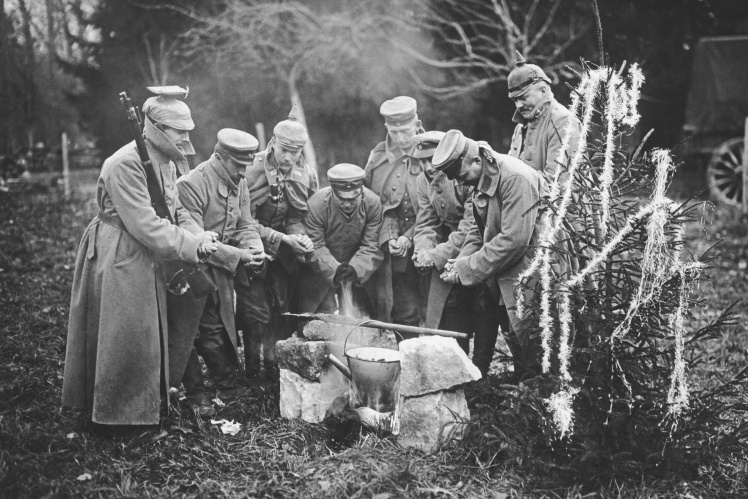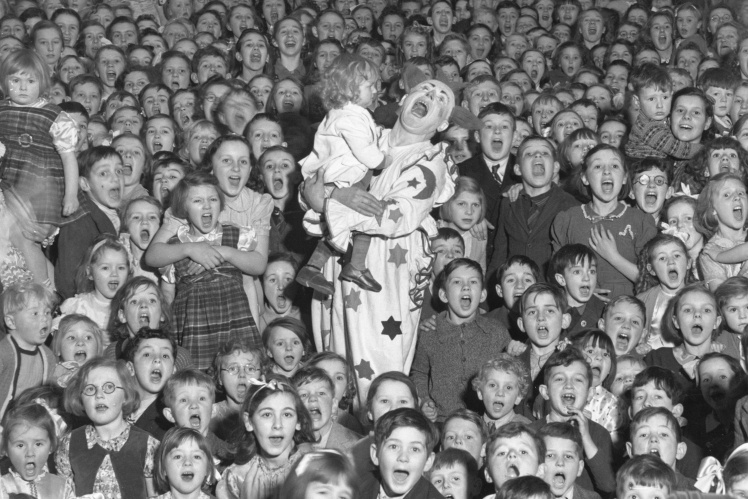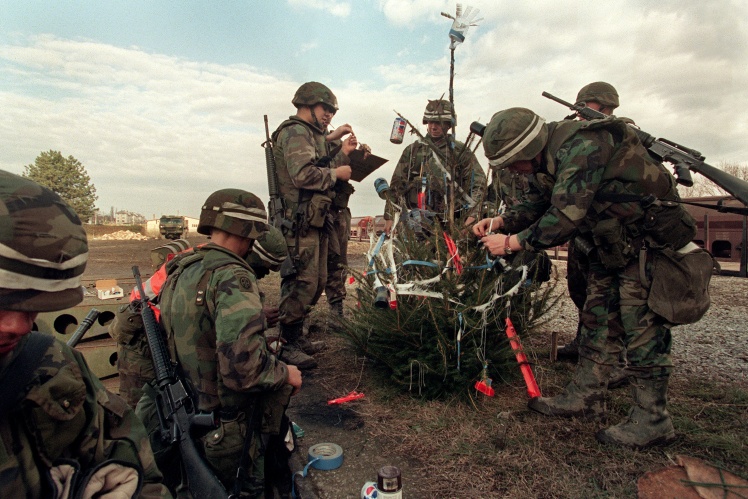During the First World War, on Christmas Eve, December 24, 1914, on the Western Front, British soldiers heard the Germans in the trenches opposite singing Christmas carols and decorating the trenches with lanterns. The soldiers began to echo among themselves. And the next day, the British and Germans met on the neutral strip, congratulated each other on Christmas, exchanged gifts, took pictures, buried the dead, exchanged prisoners and even played football. This event went down in history as the Christmas Truce, tens of thousands of soldiers from both sides took part in it.
British and German officers meet on neutral ground between the trenches on the Western Front during the Christmas Truce, 25 December 1914. British and German soldiers during the Christmas Truce, December 25, 1914.
Getty Images / «Babel'»
But rather quickly, the command of both sides strictly forbade such fraternization, fearing that it would undermine morale. So in the following years, the soldiers met each Christmas and New Year in their location. Later, there were cases when the soldiers made a short truce at Christmas, but without mutual greetings.
British sailors at Christmas dinner, 1916. German soldiers warm their hands near a fire as they prepare rabbit stew for a New Yearʼs Eve dinner during World War I, 1916.
Getty Images / «Babel'»
During World War I, postal services were overwhelmed even a month before Christmas. In addition to people sending greetings to each other, many parcels went to the front lines for the soldiers. But the best gift for the soldiers was, of course, a vacation to spend the holidays with their families.
They did not forget about the wounded. During the First World War, Red Cross nurses usually decorated hospitals for Christmas and made sure that every patient received a gift.
A pile of Christmas parcels for the US military at a sorting station in New York, 1918.
Getty Images / «Babel'»
A soldier on leave chooses Christmas presents with his wife and children, 1917.
Getty Images / «Babel'»
Christmas and New Year celebrations at a British Red Cross hospital during the First World War, December 1916.
Getty Images / «Babel'»
During the Second World War, there were no such Christmas truces as during the First World War. However, as early as 1939, German soldiers were singing Christmas carols for Americans. At that time, the United States was not yet going to enter the war.
German soldiers sing to American radio listeners during a live broadcast from the Siegfried Line, a system of fortifications along the French border. Broadcast by NBC News correspondent Max Jordan (center with microphone), December 24, 1939.
Getty Images / «Babel'»
In 1940, Germany quickly occupied most of Western Europe and besieged Great Britain. From September, a long campaign of German air bombing of British cities and towns began, which was called the Blitz. As Christmas and the New Year approached, the bombing continued. So many Britons celebrated the holidays and put up Christmas trees in bomb shelters. But in general, in the British rear, people tried to organize festive concerts and plays for children, even despite large-scale German air strikes.
Londoners celebrate Christmas in an underground station that serves as a bomb shelter, 1940.
Getty Images / «Babel'»
New Yearʼs party for children of employees of one of the British military enterprises, December 31, 1941. A soldier in the role of Santa arrives on a tank to greet British orphans, December 1942.
Getty Images / «Babel'»
The United States entered World War II in early December 1941. So the first wartime Christmas was still a little like peacetime holidays. In the following years, more and more men went to fight across the ocean. And women replaced them in factories, plants and even in the role of Santa. At the same time, artificial Christmas trees became popular both at the front and in the rear.
An American woman in a Santa costume greets a child with Merry Christmas, 1941. The crew of an American bomber carrying a bomb with the inscription "Merry Xmas Adolf", December 1942.
Getty Images / «Babel'»
American soldiers in France peel potatoes near an artificial Christmas tree, December 1944.
Getty Images / «Babel'»
During World War II, most products were in short supply. Despite this, celebrations on the front lines for British and American soldiers were rarely complete without the traditional Christmas pudding and roast turkey.
A British soldier holds two turkeys being fattened for Christmas on a farm in England, November 25, 1941.
Getty Images / «Babel'»
American soldiers at Christmas dinner, December 25, 1943.
Getty Images / «Babel'»
In the run-up to Christmas, postal services were similarly overwhelmed. Parcels were called to be prepared and sent in advance since September. During World War II, during the Christmas and New Year holidays alone, US postmen sent three to five million parcels annually. Moreover, soldiers from the front line also tried to send gifts to their relatives.
Christmas parcels for the military at a sorting station in New York, 1944.
Getty Images / «Babel'»
A British marine on a battleship puts the finishing touches on a large dollʼs house with furniture that he plans to send to his daughter for Christmas, 1943.
iwm.org.uk
After the Second World War, relations between yesterdayʼs allies — the USSR and the Western powers — quickly turned into the Cold War. One of the first crises was the blockade in 1948 by Soviet troops of West Berlin, which was under the control of the USA, Great Britain and France. However, Western powers organized airlift supplies, which operated successfully for 15 months before the blockade was lifted.
During the next part of the 20th century, humanity continued to destroy itself in endless wars, and soldiers continued to celebrate Christmas and New Year on the front lines.
An American plane carrying Christmas presents arrives in West Berlin during the Soviet blockade, December 1948.
Getty Images / «Babel'»
American soldiers during the Vietnam War rest near a small Christmas tree at their position, days after a massive assault by the North Vietnamese army, on December 25, 1967. NATO peacekeepers decorate a Christmas tree during the mission in Bosnia in 1995. One of the conflicts during the Yugoslav wars of 1991-2001 took place here.
Getty Images / «Babel'»
Translated from Ukrainian by Anton Semyzhenko.
Donate to the Ukrainian Army not only for Christmas and New Year holidays. And if possible, support independent journalism: 🔸 in hryvnia, 🔸 in cryptocurrency, 🔸 Patreon, 🔸 PayPal: [email protected].
